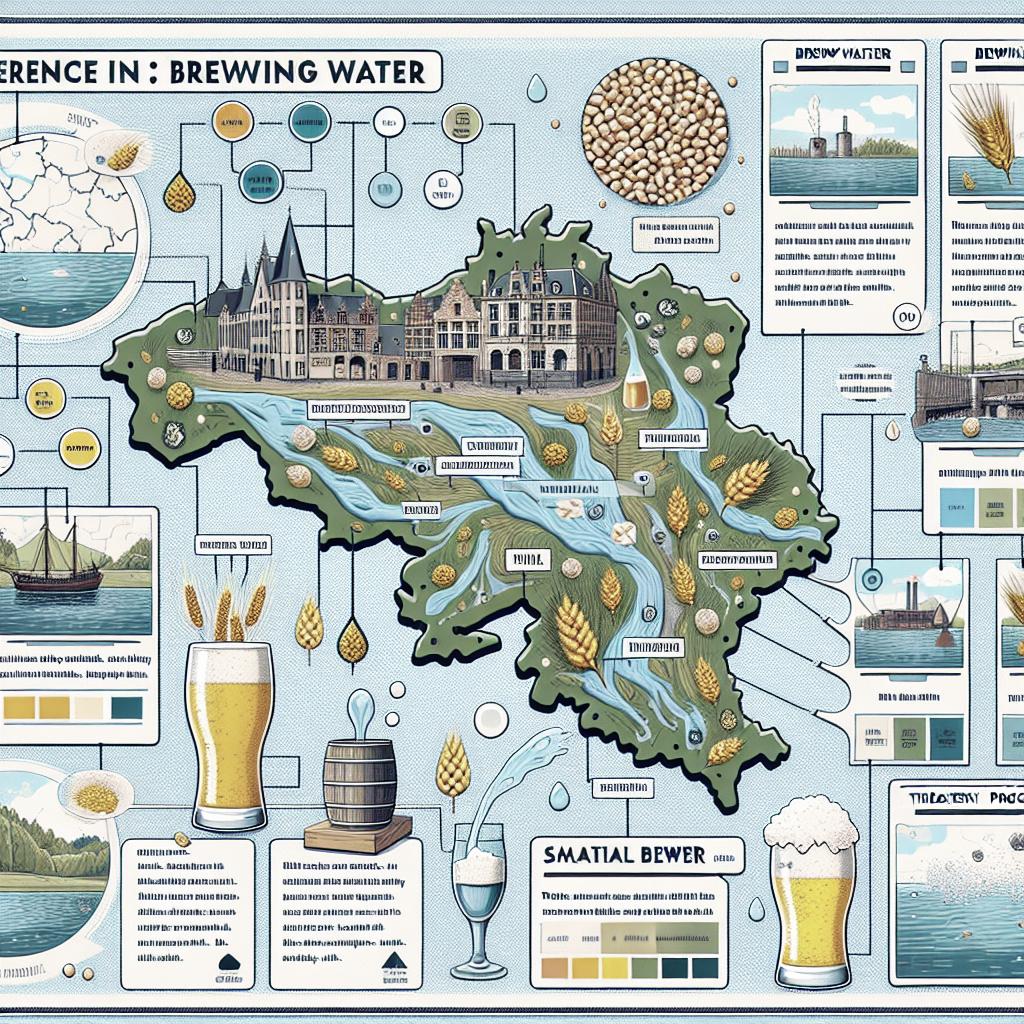The Differences in Brewing Water Across Belgium
Belgium is celebrated for its diverse and rich beer culture, with its brewing methods steeped in tradition. An essential yet often overlooked component of Belgium’s brewing prowess is the unique characteristics of its brewing water. From pH levels to ionic compositions, water from different regions plays a vital role in defining the taste and quality of various beer styles. This article delves into the differences in brewing water across Belgium, examining aspects such as wort pH and water alkalinity, flavor ions, and specific historic beer styles like Burton Pale Ales, Pilsen Pilsners, and Dublin Stouts. Additionally, a free resource is available for brewers looking to optimize their processes using data-driven fermentation techniques. This comprehensive exploration not only highlights the critical role of water in brewing but also offers insights for brewers seeking to replicate authentic Belgian flavors.
Wort pH and Water Alkalinity
Wort pH is a crucial factor in the brewing process, influencing various aspects such as enzyme activity, yeast health, and beer flavor. For Belgian brewers, understanding water alkalinity is vital, as it determines how water interacts with malt acids to affect pH levels. Regions in Belgium vary significantly in their water profiles, impacting the final wort pH and, ultimately, the characteristics of the beer. Areas with higher water alkalinity may require adjustments, such as the addition of acids or salts, to achieve the desired pH for optimal fermentation.
The interplay between wort pH and water alkalinity can also impact the perception of bitterness in beer. Higher alkalinity can accentuate the bitterness of hops, making it crucial for brewers to balance these elements carefully. Belgian brewers have mastered this balance through tradition and innovation, resulting in the distinct flavors found in their renowned beers.
Flavor Ions
Flavor ions, including calcium, magnesium, sulfate, and chloride, play an integral role in defining the characteristics of Belgian beers. Calcium, for instance, contributes to the mash’s acidity and assists in the precipitation of unwanted compounds during boiling. Different regions in Belgium exhibit varying levels of these minerals in their water sources, impacting the beer’s flavor profile.
Magnesium can contribute bittersweet notes and aid in yeast activity, while sulfate enhances hop bitterness and dryness, a crucial trait in styles like Triple IPAs. Chloride, on the other hand, adds a perceived sweetness and fullness, enhancing the beer’s body. By understanding and manipulating these ions, Belgian brewers can craft beers with complex and well-rounded flavors that are distinct to their regional origins.
Burton Pale Ales
The historic Burton Pale Ales, though originally from England, provide an interesting parallel in Belgium’s brewing scene. Known for their high sulfate levels due to the mineral-rich waters of Burton-on-Trent, these ales boast a distinctive hoppy dryness. In Belgium, similar brewing traditions have developed in regions with comparable water compositions, giving rise to beers that share these defining characteristics.
Belgian brewers seeking to emulate the Burton Pale Ale style must consider the high sulfate content and its effects on hop flavor and bitterness. Through careful selection and modification of brewing water, they can produce ales with a pronounced hop profile, while maintaining the balance favored by Belgian palates. This highlights the importance of water in replicating traditional beer styles and adapting them to local preferences.
Pilsen Pilsners
Pilsen Pilsners, although originating from the Czech Republic, offer another fascinating case study in water’s influence on beer. Characterized by their soft water with low mineral content, these beers are known for their clean, crisp taste and pale color. Some Belgian regions feature similar water profiles, conducive to producing these light, refreshing styles.
The delicate balance required in brewing Pilsen Pilsners can be challenging, as even slight variations in water mineral content can significantly impact the beer’s flavor. Belgian brewers must focus on maintaining water purity to achieve the desired clarity and crispness typical of Pilsners, showcasing their meticulous attention to detail and respect for traditional brewing techniques.
Dublin Stouts
Dublin Stouts, noted for their rich, robust flavors and dark appearance, derive much of their character from the unique water composition of Dublin, Ireland. High levels of bicarbonate in the water contribute to the stout’s dark roasted malt profile, a trait mirrored in certain Belgian stouts brewed in areas with similar water chemistry.
For Belgian brewers, replicating the Dublin Stout style involves focusing on the bicarbonate content to ensure the desired balance between roasted malt bitterness and smooth texture. By mastering the use of local water, these brewers can create stouts that resonate with those crafted in Dublin, while also infusing them with their regional flair, demonstrating an adept adaptability and understanding of water’s role in beer crafting.
Free eBook: Leveraging Data-Driven Fermentation Performance Management
For brewers interested in optimizing their fermentation processes, a complimentary eBook on leveraging data-driven fermentation performance management is available. This resource delves into the latest techniques for monitoring and adjusting fermentation parameters using data analytics, providing brewers with the tools to refine their brewing methods.
The eBook includes case studies and practical tips on how to integrate data-driven strategies into existing brewing practices, offering insights into improving consistency, efficiency, and flavor outcomes. By understanding and utilizing these modern techniques, brewers can enhance their craft, ensuring their beer consistently meets the high standards for which Belgian beers are celebrated.
Summary of Main Points
| Aspect | Details |
|---|---|
| Wort pH and Water Alkalinity | Critical for enzyme activity and flavor; varies by region in Belgium. |
| Flavor Ions | Calcium, magnesium, sulfate, and chloride shape beer’s flavor profile. |
| Burton Pale Ales | High sulfate levels influence hop bitterness and dryness, adaptable in Belgium. |
| Pilsen Pilsners | Soft water with low mineral content ensures a clean, crisp taste. |
| Dublin Stouts | High bicarbonate levels contribute to robust, roasted malt flavors. |
| Free eBook | Resource for data-driven fermentation management to enhance brewing. |


